The Japanese artist reinventing the family metalsmith trade he once hated
Advertisement
People
The Japanese artist reinventing the family metalsmith merchandise he once hated
Koichi Io once hated the aroma of copper but has since embraced the family unit tradition to create exquisite art. CNA Luxury was in Tokyo to check out cutting-edge works by artisans like him at the Loewe Foundation Craft Prize 2019.
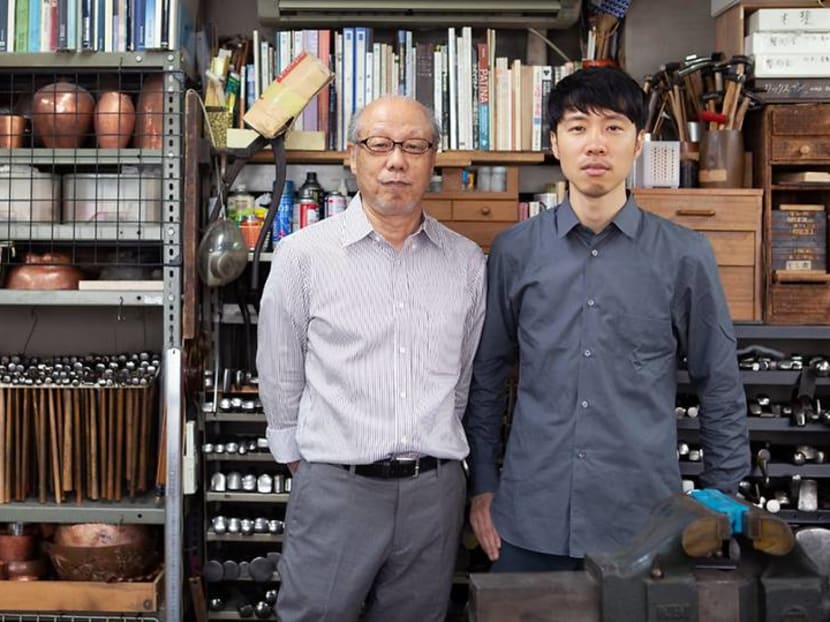
Loewe Arts and crafts Prize 2022 finalist Koichi Io (right) belongs to a family of metalsmiths, including his father, Kenji. (Photo: Aya Tokunaga/KiKi inc)
Growing up in a family of metalsmiths, Koichi Io recalled how much he hated the smell of copper.
"When I was a child, I didn't like it actually, because my father's easily [always] smelled like copper metal," said the 32-yr-sometime Japanese artist. "But after I started practising, I became fascinated with how I can grade the metal and how it appears subsequently. And at present my easily olfactory property the aforementioned!"
When your belatedly grandfather and father accept both dedicated their lives to banging away with a hammer, maybe information technology's inevitable that you end up doing the aforementioned.
READ> The Kyoto craftsman keeping his family'southward 144-yr-one-time legacy alive by hand
For the past 12 years, Io has been creating exquisite metal pieces in a 2d-floor studio in Tokyo, which he shares with his father. Information technology's a cramped place oozing with history – there are shelves total of hammers, many of which date back to the 1920s and 1940s, the family tools of the trade.
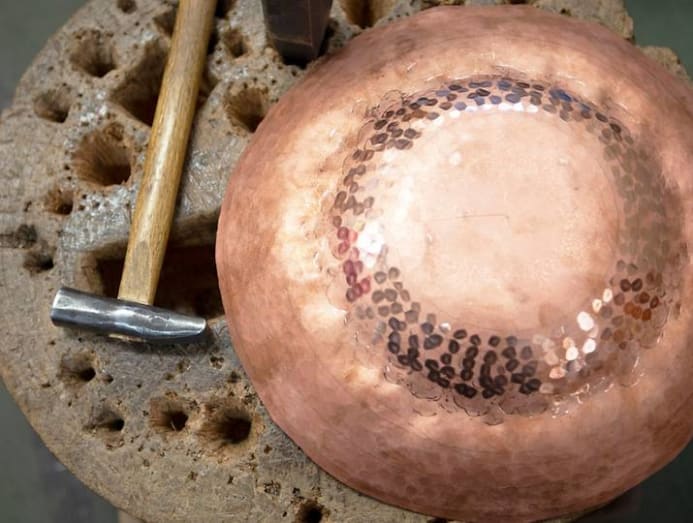
Merely while his father Kenji follows the old school way, making tea kettles, incense burners, tea pots and frying pans, Io has taken a detour with gimmicky pieces that are less functional and more art. It'due south been tough-going, he admitted. "My marketplace is Europe. I've simply sold three pieces in Japan for the by 10 years. People here prefer more functional craft pieces," he shared.
That may all change soon for the young metalsmith aptitude on reshaping a traditional Japanese practice.
READ> Past, nowadays, Futura: How the godfather of street art survived fifty years of popular culture
SPOTLIGHT ON CONTEMPORARY Craft
Io was one of the finalists at this year's recently concluded Loewe Foundation Craft Prize. His piece of work was a mix of sometime techniques and new forms: A three-legged copper vase painstakingly hammered from a single canvas of metal.
It'due south the kind of exposure many artists hope for – specially for those working in the field of contemporary craft.
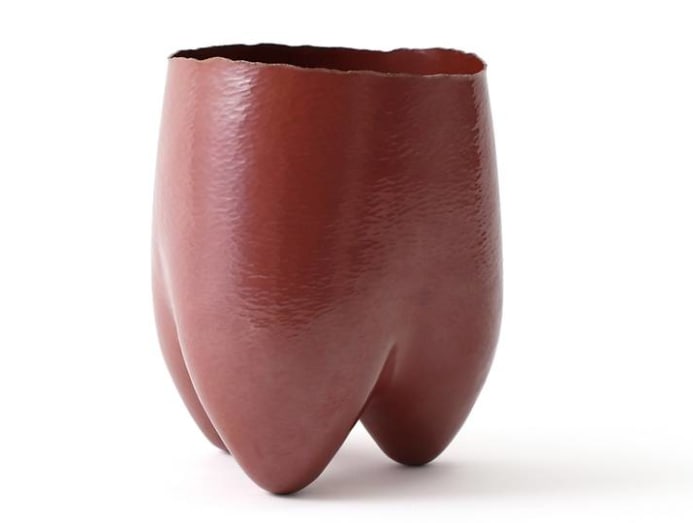
Launched in 2016, the brainchild of Loewe's creative director Jonathan Anderson may be one of the newest international fine art prizes given by fashion and luxury brands, merely its reputation is slowly growing as the most important i in in a relatively overlooked creative field.
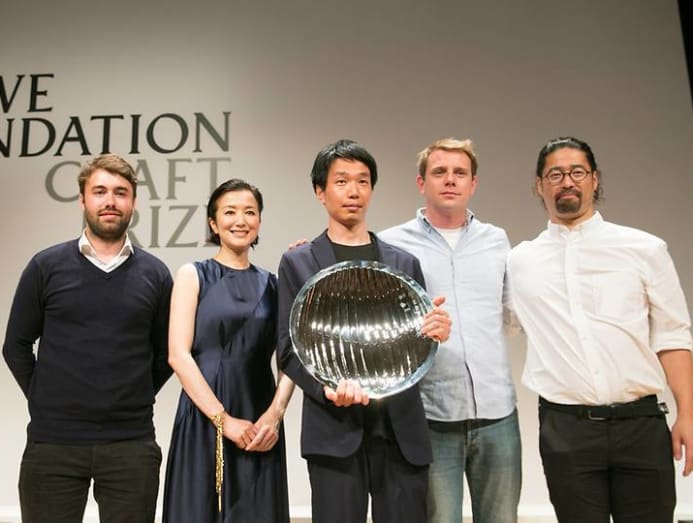
The 2022 edition, its third, comprised works by 29 artists and craftspeople from 12 countries – which were all called from an astounding ii,500 submissions in over 100 countries.
At last calendar week'due south award ceremony, another Japanese artist, Genta Ishizuka, won for his lacquer sculpture and brought home the €50,000 (South$77,000) prize.
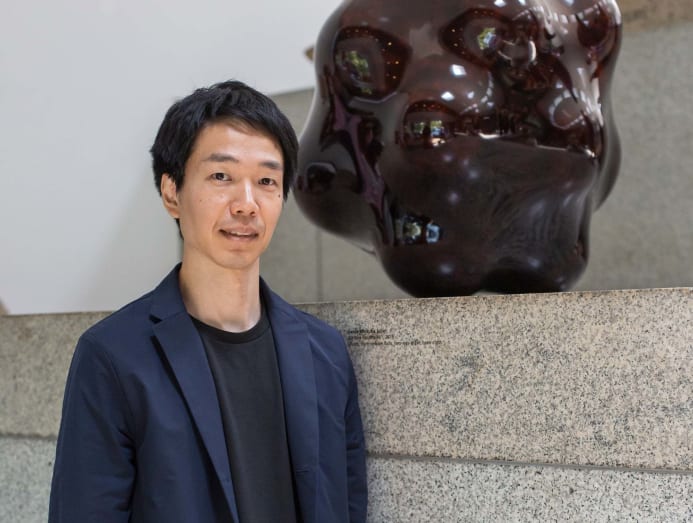
Two special mentions, which come with €v,000 consolation, were also given to the United kingdom of great britain and northern ireland's Harry Morgan for his concrete-meets-glass totem and Nippon's Kazuhito Takadoi for a sculpture fabricated of intricately tied Hawthorn twigs.
An exhibition of all the pieces are currently on display at the Sogetsu Kaikan edifice in Tokyo until Jul 22.

"What'southward so interesting about Loewe's Craft Prize is that it has made crafts mean something to the wider world and has shown how relevant craft skills are," shared Deyan Sudjic, one of the jury members and director of London's Design Museum.
He added: "People assume that craft is only most safeguarding tradition only if you look at the winning project this yr, it'southward about lacquer, which is paying homage to something which is a g, two thousand years old – simply information technology'southward done in a style that couldn't have been washed at any other fourth dimension. So it's paying respect to the by only it'due south also liberating itself from the burden of following entirely in the footsteps of the past."
READ> The artist who brought the sound of Singapore to the Venice Biennale
INNOVATION FROM ORANGES TO FEATHERS
While the Craft Prize is a nod to the Castilian luxury house'due south roots as a arts and crafts workshop in the 1800s, it's also fast becoming an event where one can meet glimpses of where the futurity of craft is heading.
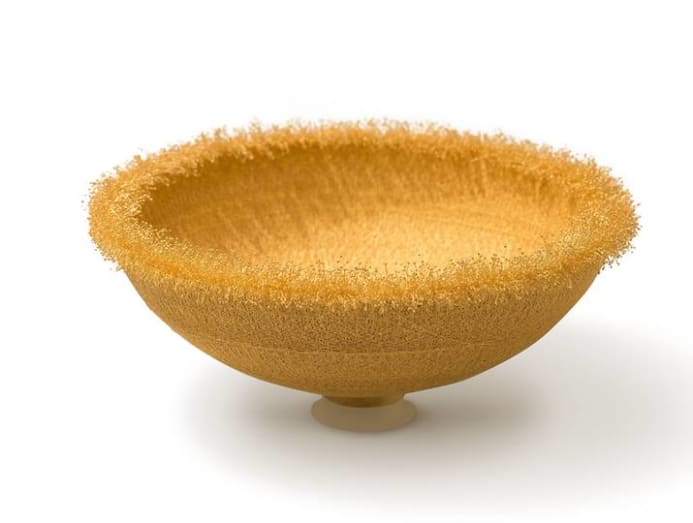
From the playful and ingenious apply of materials such equally golden, physical, forest and metal to combining historic period-old techniques with engineering, many of the artists on display are putting their spin on craftsmanship.
Like Io, 2 other Japanese artists played around with another craft tradition: Urushi or Japanese lacquer.
For this year'due south winner, Ishizuka, it was his fascination with the lacquer'south glossy sheen and finding the all-time form to highlight it that led to his sculpture – and the globular event was inspired by a regular trip to the supermarket.
"I found oranges sitting in a mesh bag [and institute it] interesting that the oranges brand a kind of structure and mesh pocketbook is making the surface," he said.
Meanwhile, finalist Masanori Nishikawa shared how he's been combining urushi with Japanese washi paper and linen cloth to create sculptures – a technique he's been using (and education to students) for the past 30 years.
And it'southward not just about being inspired past one's ain traditions. Espana's Henar Iglesias and New Zealand's Sophie Rowley both looked to other cultures for inspiration.
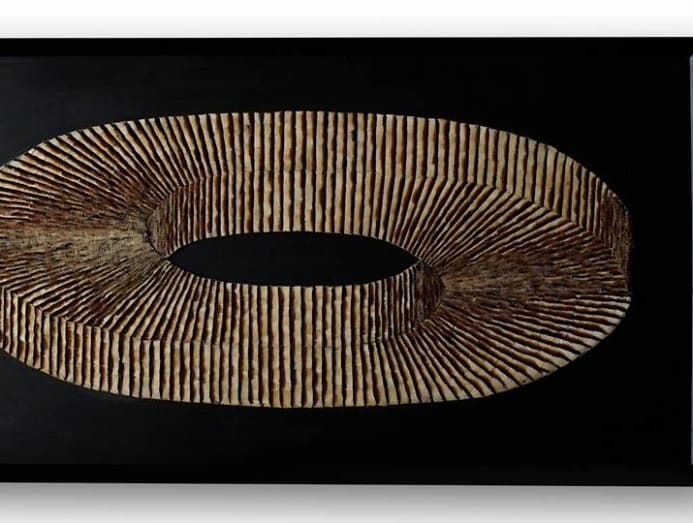
Iglesias, who was built-in into a millinery family, employed bird feathers in both making hats every bit well as for her work as an artist. It was an ancient practise in United mexican states way before Columbus had arrived in the Americas and she started to use it in her pieces a decade agone.
For Rowley, a year-long stay in Republic of india introduced her to Khadi textiles, which she used to create a wall slice series for the prize. And with the techniques came a deeper agreement of the culture. "It's a modest, everyday traditional Indian fabric just it also played an important office for independence in India because it was basically the get-go handmade cloth in the state," she said.
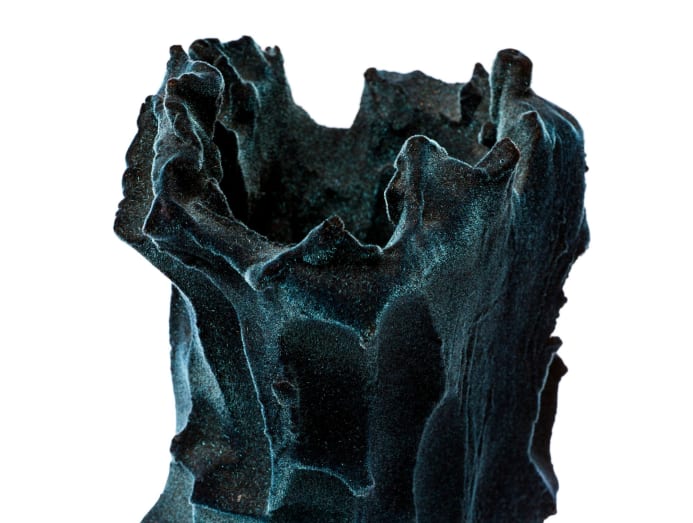
And while many frequently assume craftsmanship is almost a single individual hand painstakingly creating something, collaboration is sometimes fundamental. For Israeli creative person Michal Fargo's ceramic sculpture, the surface is covered past velvet-like fabric through a technique chosen "flocking". For this, she collaborated with a third-generation master flocker.
Collectively, the works on display at the exhibition stands equally a kind of rebuttal to the trends of the modernistic life.
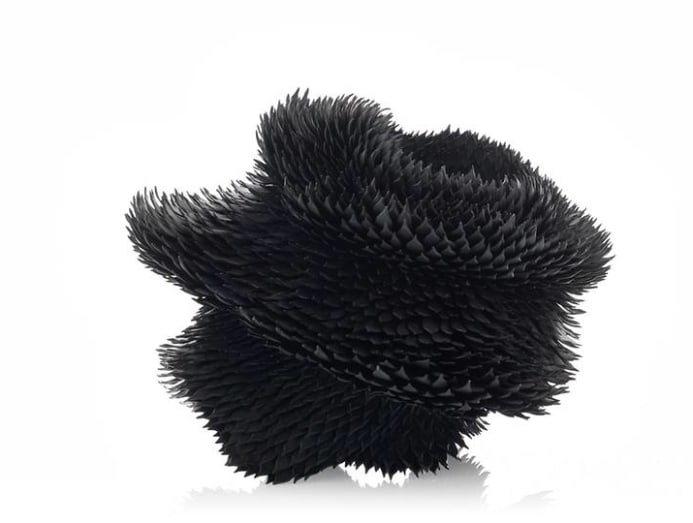
Nosotros live in a earth in which fabric qualities, touch, owning things, objects, they've all been abolished in some ways by the digital revolution. So that's why people really still await for comfort of craft objects, of things that they tin can touch on and feel and smell," said jury member Sudjic. "The crafts that are shown hither by Loewe are all about immense patience, of taking time and trouble, and thinking things through."
For tertiary-generation metalsmith Io, it'due south back to the studio he shares with his father, where he'll continue hammering away in pursuit of acceptance.
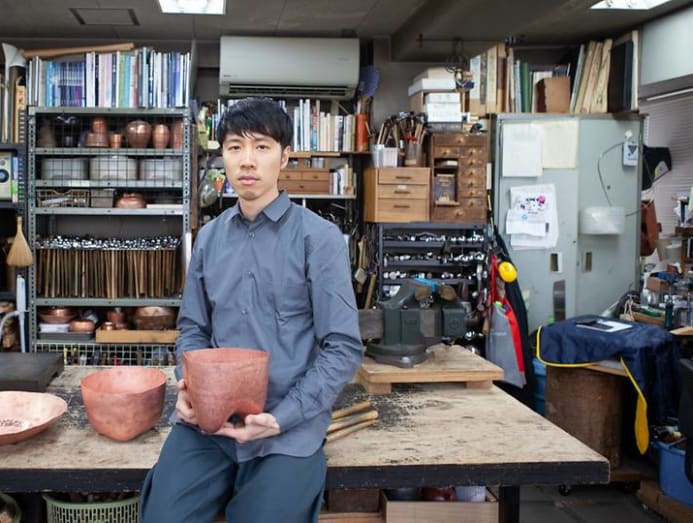
"My field is non as large as the traditional craft field in Japan and non every bit big as the art market or fine art field, but we have our own language in gimmicky craft. To preserve is not practiced enough – you have to apply what you know as your own fashion of expression."
CNA Luxury was in Tokyo at the invitation of Loewe.
READ> Run into the Singaporean who's spicing up the art scene with her giant chillies
Source: https://cnalifestyle.channelnewsasia.com/people/loewe-foundation-craft-prize-257021

0 Response to "The Japanese artist reinventing the family metalsmith trade he once hated"
Enviar um comentário